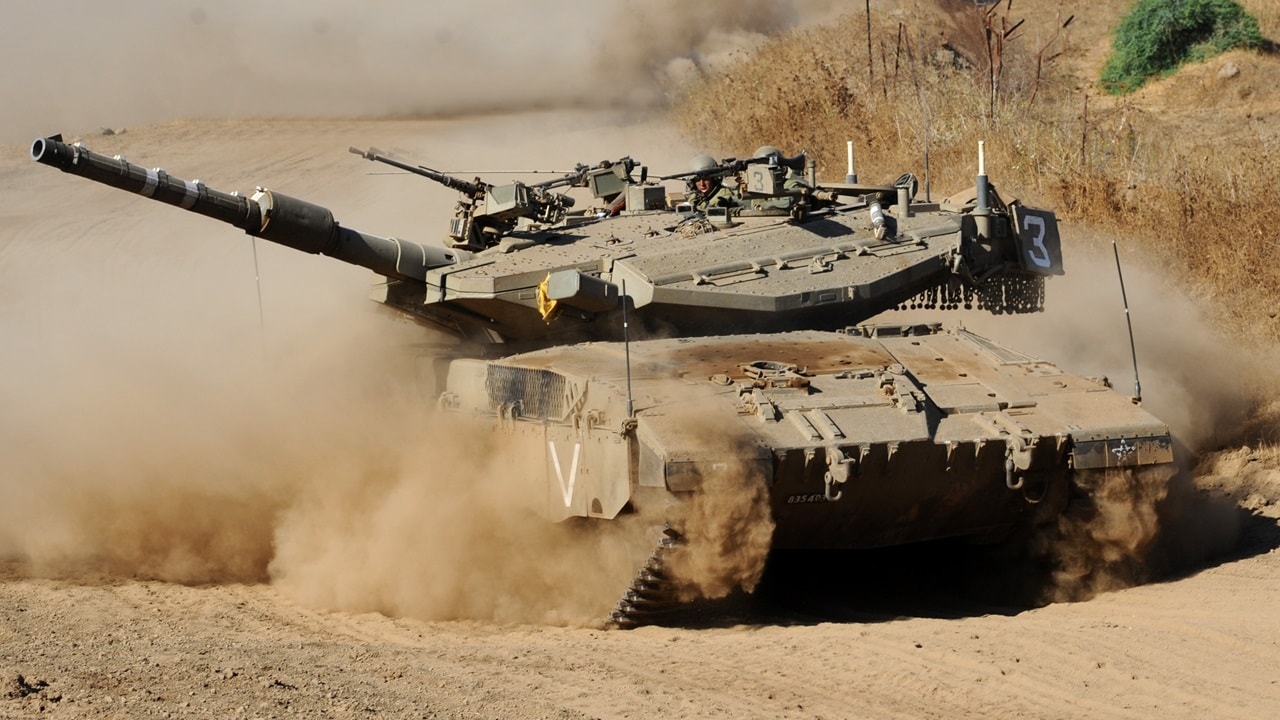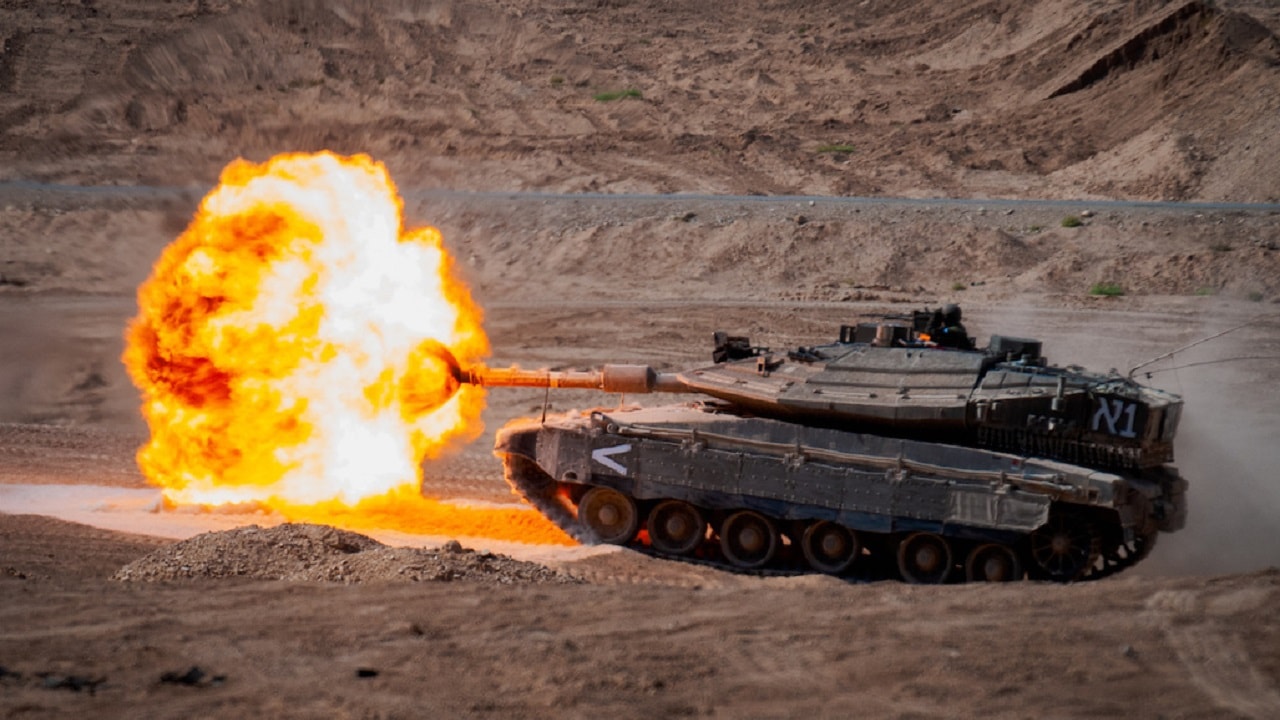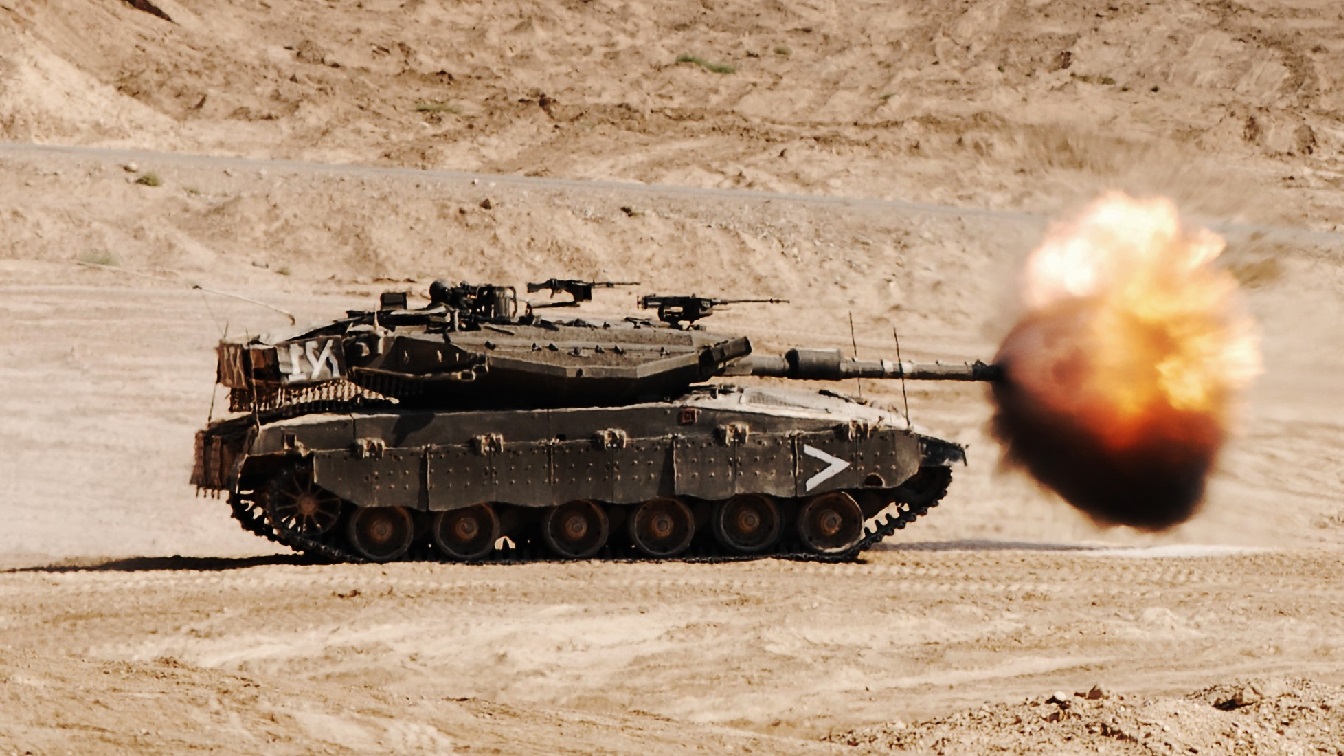Key Points and Summary: The Merkava tank, Israel’s premier armored vehicle, has proven its effectiveness in combat with its unique front-engine design, heavy armor, and Trophy Active Protection System (APS). Designed for crew survivability and versatility, it remains a formidable force in open battle.
-However, recent fighting in Gaza has highlighted its vulnerabilities, particularly in urban warfare where its size and weight make it susceptible to ambushes. While the Merkava’s APS has successfully intercepted many threats, it is not foolproof.
-Despite its challenges, the Merkava remains central to Israel’s military doctrine, evolving to meet modern battlefield threats while maintaining its legacy of innovation.
-The Merkava tank, a cornerstone of Israel’s armored forces, is renowned for its unique design and battlefield effectiveness.
-Developed in response to Israel’s specific defense needs, the Merkava has evolved through several iterations, each enhancing its capabilities and addressing the lessons learned from previous conflicts.
4 Words: Best Tank on Earth?
History of the Merkava Tank
The development of the Merkava tank began in the early 1970s, spearheaded by Major General Israel Tal. The impetus for creating an indigenous tank arose from Israel’s experiences during the Six-Day War and the subsequent Yom Kippur War.
Reliance on foreign tank supplies proved problematic, prompting Israel to pursue a domestically produced main battle tank that could meet its unique operational requirements
The first model, the Merkava Mark 1, entered service in 1979. It featured a 105 mm rifled gun and a design that prioritized crew protection.
The tank’s engine was placed at the front, providing additional armor protection for the crew compartment located at the rear. This layout was a significant departure from traditional tank designs and underscored Israel’s emphasis on crew survivability
Over the years, the Merkava has undergone several upgrades, resulting in four main variants: the Merkava Mark 1, Mark 2, Mark 3, and the latest, the Merkava Mark 4.
Each iteration has incorporated advancements in armor, firepower, and mobility, ensuring the tank remains a formidable force on the battlefield
Pros: What the Merkava Brings to the Table
One of the Merkava’s most notable strengths is its emphasis on crew protection. The front-mounted engine acts as an additional layer of armor, shielding the crew from frontal attacks.
The tank also features advanced composite and modular armor, which can be easily replaced if damaged
The Merkava Mark 4 is equipped with a 120 mm smoothbore gun capable of firing a variety of ammunition types, including high-explosive anti-tank (HEAT) rounds and kinetic energy penetrators.

Merkava Tank from Israel
Additionally, new Merkava 4s are equipped with the Trophy Active Protection System (APS) which is capable of detecting incoming anti-tank missiles and intercepting them before they hit the tank.
Despite its heavy armor, the Merkava maintains impressive mobility. The Mark 4 variant is powered by a 1,500 horsepower diesel engine, enabling it to reach speeds of up to 64 km/h (40 mph) on roads and 55 km/h (34 mph) off-road. This mobility is crucial for rapid deployment and maneuverability in diverse terrains
The Merkava’s design includes features that enhance its versatility in combat. For instance, it has a rear compartment that can be used to transport infantry or evacuate wounded soldiers. This adaptability makes the Merkava not just a tank but a multi-role vehicle capable of supporting various battlefield operations
Cons: Weaknesses of the Merkava Tank
Israel’s war with Hamas has highlighted many of the Merkava’s strengths but it has also demonstrated some of its weaknesses.
For instance, its extensive armor and advanced systems contribute to its significant weight, a whopping 65 tons. This weight can limit its operational range and make it more challenging to transport, especially in regions with poor infrastructure like in the Gaza Strip.

An Israeli Defense Forces Merkava Mark 4 tank fire 120mm canon shell.
While the Merkava is highly effective in open terrain, its size and weight can be disadvantages in urban warfare.
In Gaza, there have been multiple instances where the Merkava has fallen prey to waiting Hamas operatives who ambush the tank with RPGs. Moreover, in some instances, the Trophy APS failed to detect and intercept the incoming projectile, thus resulting in the tanks destruction.
Granted, in many other cases, Merkava’s have been able to intercept multiple missiles, however recent combat experience indicated that the system was not 100 percent reliable.
Why the Merkava Is A Powerhouse
The Merkava tank stands as a testament to Israel’s innovative approach to armored warfare. Its unique design, prioritizing crew protection and versatility, has made it a formidable asset in the IDF’s arsenal.
While it has some limitations, particularly in terms of weight and cost, the Merkava’s strengths in firepower, mobility, and adaptability ensure it remains a critical component of modern armored warfare.
About the Author: Isaac Seitz
Isaac Seitz, a 19FortyFive Defense Columnist, graduated from Patrick Henry College’s Strategic Intelligence and National Security program. He has also studied Russian at Middlebury Language Schools and has worked as an intelligence Analyst in the private sector.

